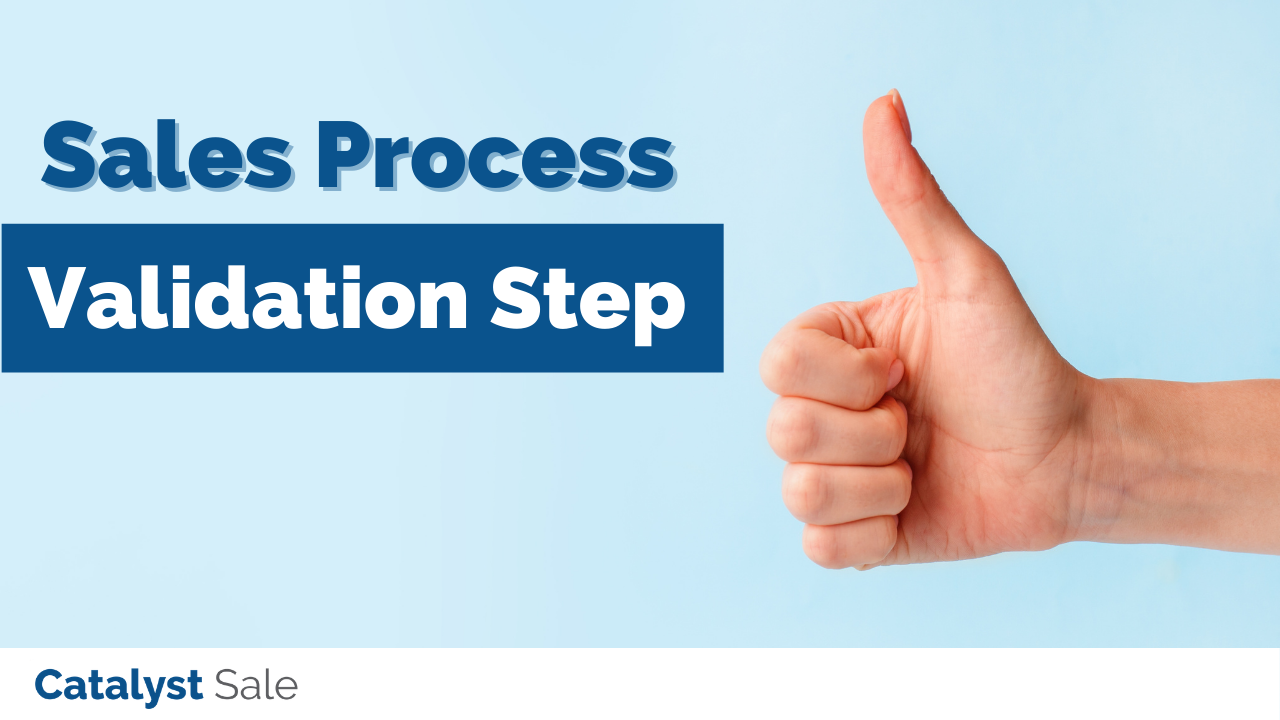What is the Validation Step?
The validation step helps you determine whether or not there is a business opportunity in front of you. This step is all about getting to know the organization, the people that work there, and their roles. It’s about validating that you have the right information, that you’re working with the right people, and that you’re working with the right organization.
What Does it Mean for an Opportunity to be Valid?
When declaring that an opportunity is valid, there are a few things you have to look at. You need to know who you’re going to be working with, why they think you can help, and what impact they think you could have. A lot of these answers will be conceptual because we aren’t getting into the sales process yet. This step is all about making sure you know who you’re working with, and why they need your services.
How do I Make the Validation Step Effective?
Ultimately – this is about determining whether or not there is the potential for a business relationship. To do this you need to be able to answer the question, “Can I see a scenario where it would make sense for us to conduct business with each other?”
Do Your Homework
Before meeting with a new potential client, do some research on them. This will allow you to catch any red flags beforehand that may show that they aren’t who you want to be working with, and will also give you a baseline knowledge to work with during your meeting. Having this knowledge will send the message that you’re prepared and ready to have a productive dialogue from the beginning.
Be Thorough
Do all of your research, questioning, and investigating diligently at the beginning of the process. If you aren’t thorough, you’ll have to backtrack and ask questions you should have already known the answer to, making you seem unreliable and ineffective. Speeding through the process could lead you to miss out on vital information that could help you retain the client.
Double Check Your Information
During the validation step, it’s important to make sure your information is correct. This includes information about the company as a whole, and information about the people you’ll be working with. Paying attention to small details helps you avoid unprofessional mistakes like referring to them by the wrong title.
Gauge Their Engagement
One sure way to make the right decision during this step of the sales process is to properly gauge customer engagement. If they’re responding with questions, setting up meetings, and actively working to resolve the problem, they’re someone you should consider working with. If they seem to lack engagement or keep pushing back meeting dates, you may want to think about utilizing your time elsewhere.
In the end, the validation step is all about getting to know potential clients before you decide whether or not you want to work with them. This step allows you to gauge how likely they are to work with you, research them, and double-check all of the information you have on them. Successful validation of opportunity makes the qualification step much easier, as you will have already built some form of a relationship with your client. This effect will carry on throughout the entire process, making it much easier and less time-consuming.
Think Back to the Question
Can I see a scenario where it would make sense for us to conduct business with each other?” If Yes – the threshold is low – and if you are working with your Ideal Customer Profile (ICP) at the organization and individual level – the answer will likely be yes. If it is “No” – you should move on.
Catalyst Sale
Sales is a Thinking Process. Catalyst Sale is a learning organization first and foremost. That’s why we care about a thinking process that enables results versus a process that tells people what to do. We aim to add value whenever we can, and our true success is measured by the sustainability of our work long after we complete a project. We surround ourselves with good company and never stop learning.

